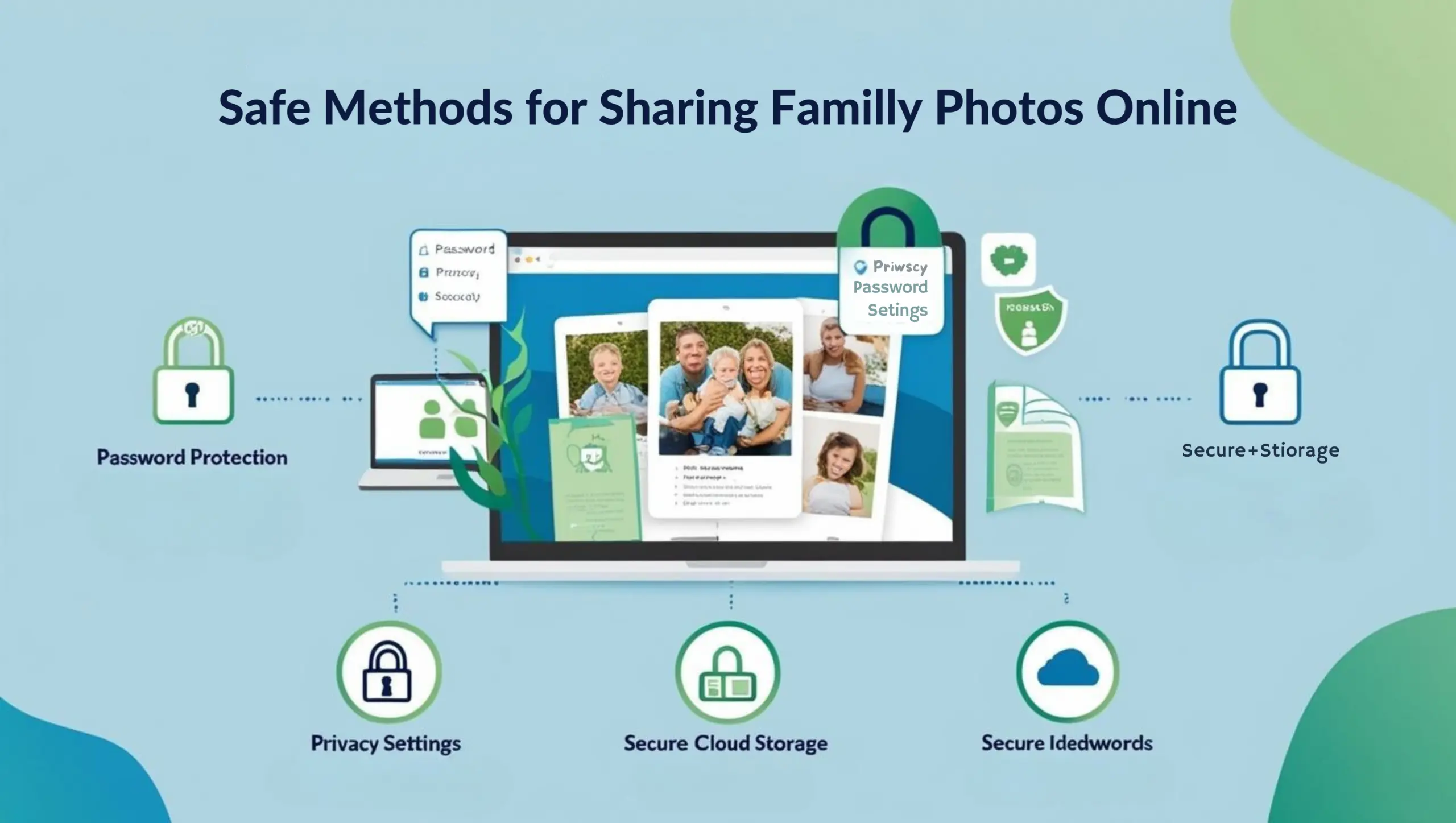The CIO’s Guide to Securely Sharing Personal Photos Online: Risks, Platforms, and Best Practices
In today’s digital-first world, sharing photos online is second nature. Whether it’s for personal use or internal communications, images play a central role in documenting and distributing information. However, when it comes to sharing family or personal photos online, especially through mainstream cloud or social platforms, privacy risks are often overlooked.
For CIOs and CISOs of enterprises that emphasize secure file sharing, understanding these risks is critical—not only for internal policies but also for educating employees and protecting their families’ digital lives. This article explores why privacy matters when sharing photos online, evaluates popular photo-sharing platforms, and recommends a safer, enterprise-grade alternative.
Why Privacy Matters When Sharing Family Photos
Personal photos contain more than memories—they carry metadata, facial recognition cues, location information, and behavioral insights that can be exploited if they fall into the wrong hands. The risks increase significantly when sharing photos of children or other sensitive subjects.
Here’s why privacy in photo sharing matters:
- Data Exploitation: Most mainstream platforms monetize user data. This includes scanning photos to build ad profiles, train AI, or feed third-party analytics tools.
- Identity Theft & Fraud: Images can be used in social engineering schemes or stolen to create fraudulent online personas.
- Exposure of Minors: Children are particularly vulnerable, and their data can be exploited long before they’re aware of the consequences.
From a leadership standpoint, protecting personal data—whether organizational or private—is a key component of any comprehensive cybersecurity strategy.
Most Photo-Sharing Platforms Don’t Offer Real Privacy
Let’s take a closer look at how today’s most-used photo-sharing services handle privacy and security:
Google Photos
- Encryption: Only in transit and at rest—Google can access your photos once they reach its servers.
- AI Integration: Uses its Gemini AI to analyze and index photos by faces, locations, and content.
- Privacy Concerns: Despite claims that data isn’t used for ads, Google’s track record of privacy violations raises red flags.
- Business Model: Ad-driven, which conflicts with strong privacy principles.
iCloud Photos (Apple)
- Standard Protection: Encrypts data in transit and at rest using Apple-managed keys.
- Advanced Data Protection (ADP): Offers end-to-end encryption (E2EE) if enabled manually.
- Limitations: E2EE doesn’t cover all metadata, and privacy features may not extend to shared recipients.
- Ecosystem Lock-in: Works best within Apple’s device ecosystem, limiting cross-platform compatibility.
Dropbox
- Encryption: Offers E2EE only for Business Plus and Enterprise plans; consumer accounts use standard encryption.
- Privacy Issues: Collects extensive user data and shares it with partners like Google and Amazon.
- Security History: Previous breaches include the exposure of 68M+ passwords and unauthorized data sharing.
Social Media Platforms (Facebook, Instagram)
- Visibility: Default settings make posts public unless manually restricted.
- Data Collection: Meta collects content and metadata to personalize ads and sells insights to third parties.
- Control Mechanisms: Offers private albums and follower-only access—but users must opt in and understand the privacy settings deeply.
Flickr
- Privacy Options: Allows limiting visibility, but Flickr itself retains access.
- Image Recognition: Uses AI to tag, analyze, and organize images.
- Third-Party Sharing: Personal data is shared with vendors, service providers, and during acquisitions.
Amazon Photos
- Encryption: In transit and at rest only—not true E2EE.
- AI Tagging: Automatically organizes photos using image recognition.
- Data Use: Information is used to serve interest-based ads and may benefit Amazon’s other business arms.
Why End-to-End Encryption Is the Gold Standard
When it comes to sharing personal photos—or any sensitive files—true end-to-end encryption is non-negotiable. Unlike standard encryption that protects data only during transmission or while stored in the cloud, E2EE ensures that:
- Only the sender and intended recipient can view the content.
- The service provider has zero access to files, even during storage.
- In the event of a data breach, your files remain unreadable and secure.
This is especially important for organizations that handle confidential data or want to extend the same level of digital safety to their workforce and their families.
A More Private Solution: 689Cloud Secure File Sharing
At 689Cloud, we provide enterprise-grade file sharing with privacy at the core. Our platform offers:
- Automatic end-to-end encryption: From file name to metadata, everything is secured by default.
- Access control: Password protection, expiring links, and permission settings ensure only intended recipients can access your content.
- Zero-knowledge architecture: Not even 689Cloud can view the files you upload and share.
- Cross-platform support: Seamlessly works across Windows, macOS, iOS, Android, and web environments.
- Secure backup: Automatically back up your photos and files to prevent data loss from lost or stolen devices.
For enterprises that value privacy, using 689Cloud isn’t just about secure file sharing at work—it’s about embedding data protection into your everyday digital habits.
Final Thoughts: Extend Enterprise Security to Personal Digital Life
While photo sharing may seem like a personal concern, it intersects with enterprise-level cybersecurity. Threat actors don’t differentiate between professional and personal data—every leak is an opportunity.
CIOs and CISOs must lead the charge by adopting and advocating for secure tools that offer real privacy. That includes moving away from surveillance-based platforms and adopting solutions like 689Cloud that offer true end-to-end protection.
If data privacy is your priority, 689Cloud is the secure way to share files and personal memories—without compromise.

